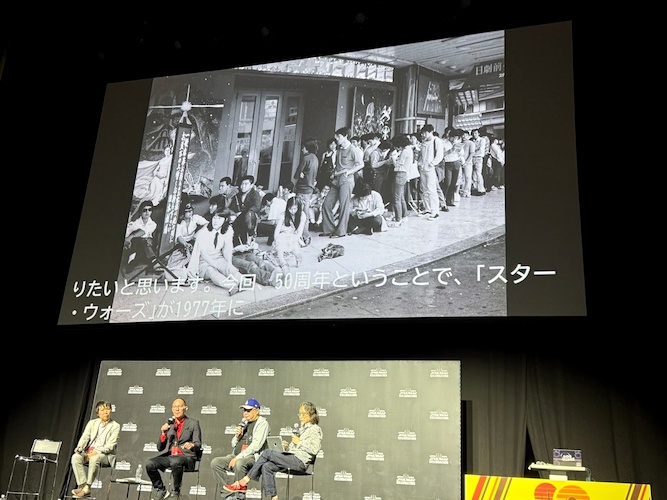How Japanese Culture Gave Birth to Star Wars and Took It Back Again
At Star Wars Celebration Japan, moderator Roland Kelts (author of Japanamerica) opened a fascinating panel exploring the ongoing cultural exchange between Japanese storytelling and the Star Wars universe. During “Telling Stories Across Cultures: Star Wars and Japan," Roland was joined by veteran anime professionals Shuzo Shiota (President and CEO, Polygon Pictures), Mitsuyasu Sakai (writer of “The Duel" from Star Wars: Visions), and Taiki Sakurai (producer/writer, Ghost in the Shell: Stand Alone Complex and founder of Salamander Pictures) for a discussion that revealed a striking narrative loop - what Kelts called a “Mobius strip" of mutual influence that stretches from Akira Kurosawa to George Lucas and back again through anime.
How Japan and a Galaxy Far, Far Away Continue to Inspire Each Other
- George Lucas’s Inspiration from Japan: Lucas famously drew on Kurosawa’s The Hidden Fortress, borrowing its perspective (two lowly characters narrating a larger saga) and Samurai film aesthetics to shape Star Wars. The very word “Jedi" is believed to derive from the Japanese term “Jidai Geki" (period drama).
- Star Wars Inspires Japanese Media: Following Star Wars' release in Japan (1978), a sci-fi boom ignited Japanese anime. Series like Space Battleship Yamato, Gundam, and Evangelion emerged with increasingly serious, space-opera tones inspired in part by Lucas's galaxy.
- Cultural Remix - Battle of the Planets: In the U.S., Science Ninja Team Gatchaman was rebranded post-Star Wars as Battle of the Planets, with an added robot sidekick named 7-Zark-7 echoing R2-D2 and C-3PO, illustrating how Star Wars reshaped how Japanese anime was perceived and localized in the West.
- Anime as the Home of Japanese Sci-Fi: Without Hollywood-scale budgets, Japanese creators turned to animation to tell epic sci-fi stories. As Sakurai noted, even today, anime remains the dominant venue for serious genre storytelling in Japan.
- Gundam’s Evolution: The iconic robot franchise embraced more grounded technology and lightsaber-like “beam sabers" after Star Wars’ influence, moving away from the more exaggerated robot tropes of earlier decades.
- Evangelion’s Psychological Depth: While director Hideaki Anno was clearly influenced by space opera, including Star Wars, Neon Genesis Evangelion deconstructed the genre into a deeply personal, psychological journey. According to Sakai, its success marked a turning point in anime’s thematic freedom.
- Star Wars in the Modern Anime World: From Star Wars: Visions to the visual aesthetics of Star Wars Resistance, Lucasfilm continues to look to Japanese anime studios like Polygon Pictures to bring new styles and perspectives to the franchise. Shiota discussed how Star Wars Resistance was influenced by the look of Macross and early-80s anime.
- Star Wars Today in Japan: At a time when Western pop culture has lost must of its influence in Japan, Japanese pop culture is bigger than ever in the West. Still, one thing remains true across cultures - the Star Wars saga bridges the divide.
Much of the credit for the success of Star Wars is owed to the culture that primarily inspired it. Star Wars Celebration Japan offered a perfect reflection of the cyclical nature of how Japanese stories and themes inspired a galaxy far, far away, only for it to boomerang back to reshape the present of Japan’s anime boom.
Stay tuned right here to Laughing Place for more news coming out of Star Wars Celebration 2025 in Japan, including at our live blog!

